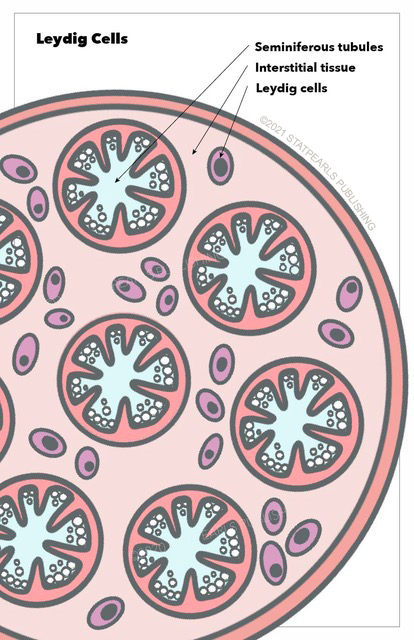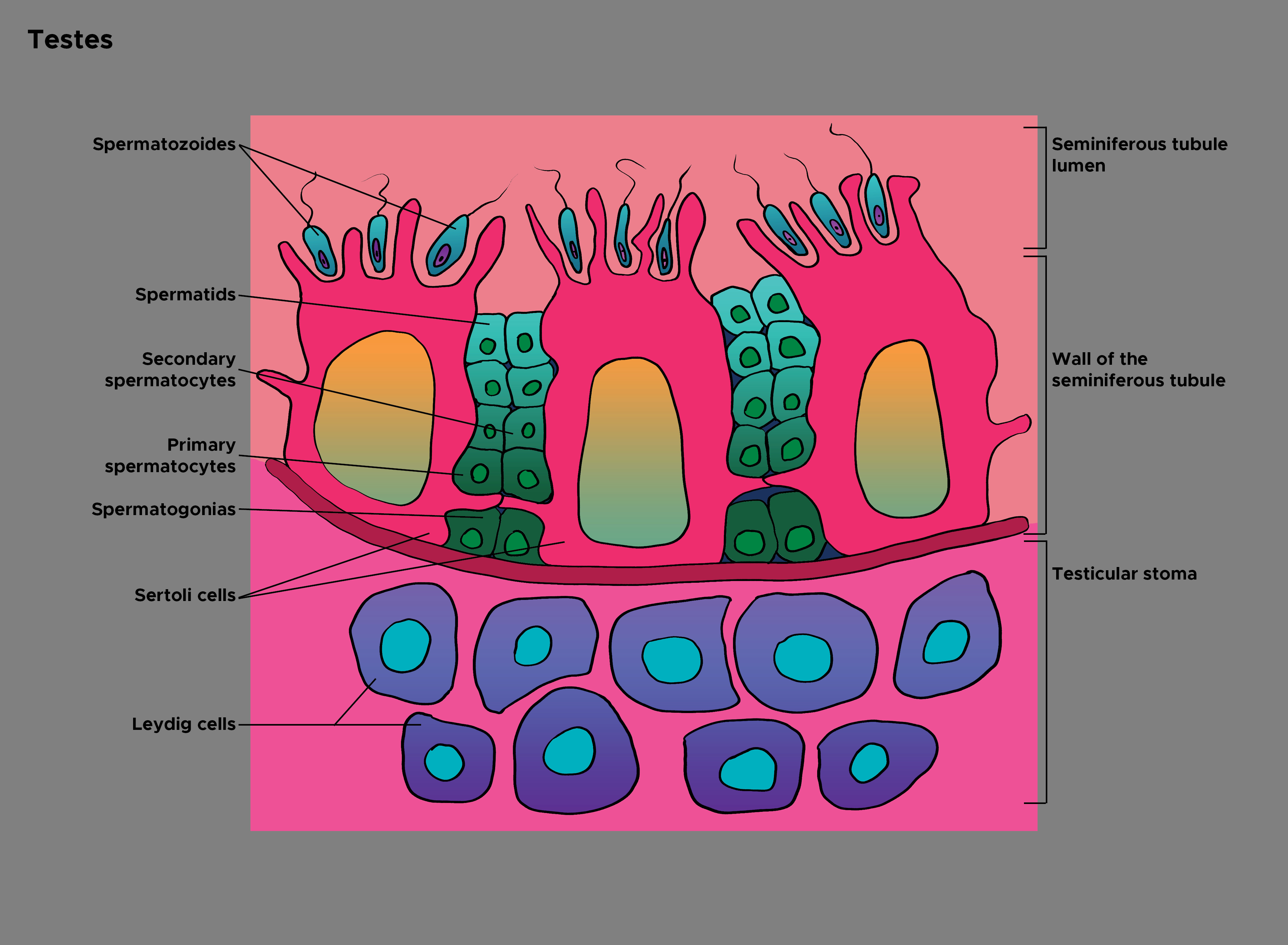[1]
Al-Agha OM, Axiotis CA. An in-depth look at Leydig cell tumor of the testis. Archives of pathology & laboratory medicine. 2007 Feb:131(2):311-7
[PubMed PMID: 17284120]
[2]
Mahran AM, Elgamal DA, Ghafeer HH, Abdel-Maksoud SA, Farrag AA. Histological alterations in Leydig cells and macrophages in azoospermic men. Andrologia. 2017 Oct:49(8):. doi: 10.1111/and.12714. Epub 2016 Oct 6
[PubMed PMID: 27709649]
[3]
Regadera J, Codesal J, Paniagua R, Gonzalez-Peramato P, Nistal M. Immunohistochemical and quantitative study of interstitial and intratubular Leydig cells in normal men, cryptorchidism, and Klinefelter's syndrome. The Journal of pathology. 1991 Aug:164(4):299-306
[PubMed PMID: 1681041]
[4]
Zhou R,Wu J,Liu B,Jiang Y,Chen W,Li J,He Q,He Z, The roles and mechanisms of Leydig cells and myoid cells in regulating spermatogenesis. Cellular and molecular life sciences : CMLS. 2019 Jul;
[PubMed PMID: 30980107]
[5]
Griswold SL, Behringer RR. Fetal Leydig cell origin and development. Sexual development : genetics, molecular biology, evolution, endocrinology, embryology, and pathology of sex determination and differentiation. 2009:3(1):1-15. doi: 10.1159/000200077. Epub 2009 Apr 1
[PubMed PMID: 19339813]
[6]
Wang JQ, Cao WG. Morphological characterization of adult mouse Leydig cells in culture. Biochemical and biophysical research communications. 2016 Jan 22:469(4):836-41. doi: 10.1016/j.bbrc.2015.12.018. Epub 2015 Dec 11
[PubMed PMID: 26686420]
[7]
Ezeasor DN. Light and electron microscopical observations on the Leydig cells of the scrotal and abdominal testes of naturally unilateral cryptorchid West African dwarf goats. Journal of anatomy. 1985 Aug:141():27-40
[PubMed PMID: 2867081]
[8]
Ulbright TM, Srigley JR, Hatzianastassiou DK, Young RH. Leydig cell tumors of the testis with unusual features: adipose differentiation, calcification with ossification, and spindle-shaped tumor cells. The American journal of surgical pathology. 2002 Nov:26(11):1424-33
[PubMed PMID: 12409718]
[9]
Nason GJ, Redmond EJ, Considine SW, Omer SI, Power D, Sweeney P. The natural history of Leydig cell testicular tumours: an analysis of the National Cancer Registry. Irish journal of medical science. 2018 May:187(2):323-326. doi: 10.1007/s11845-017-1662-4. Epub 2017 Jul 19
[PubMed PMID: 28726031]
[10]
Lipsett MB. Physiology and pathology of the Leydig cell. The New England journal of medicine. 1980 Sep 18:303(12):682-8
[PubMed PMID: 6105616]

